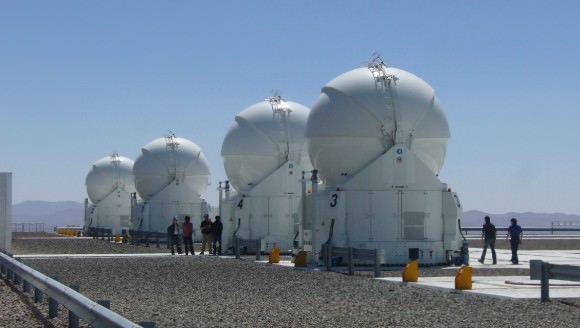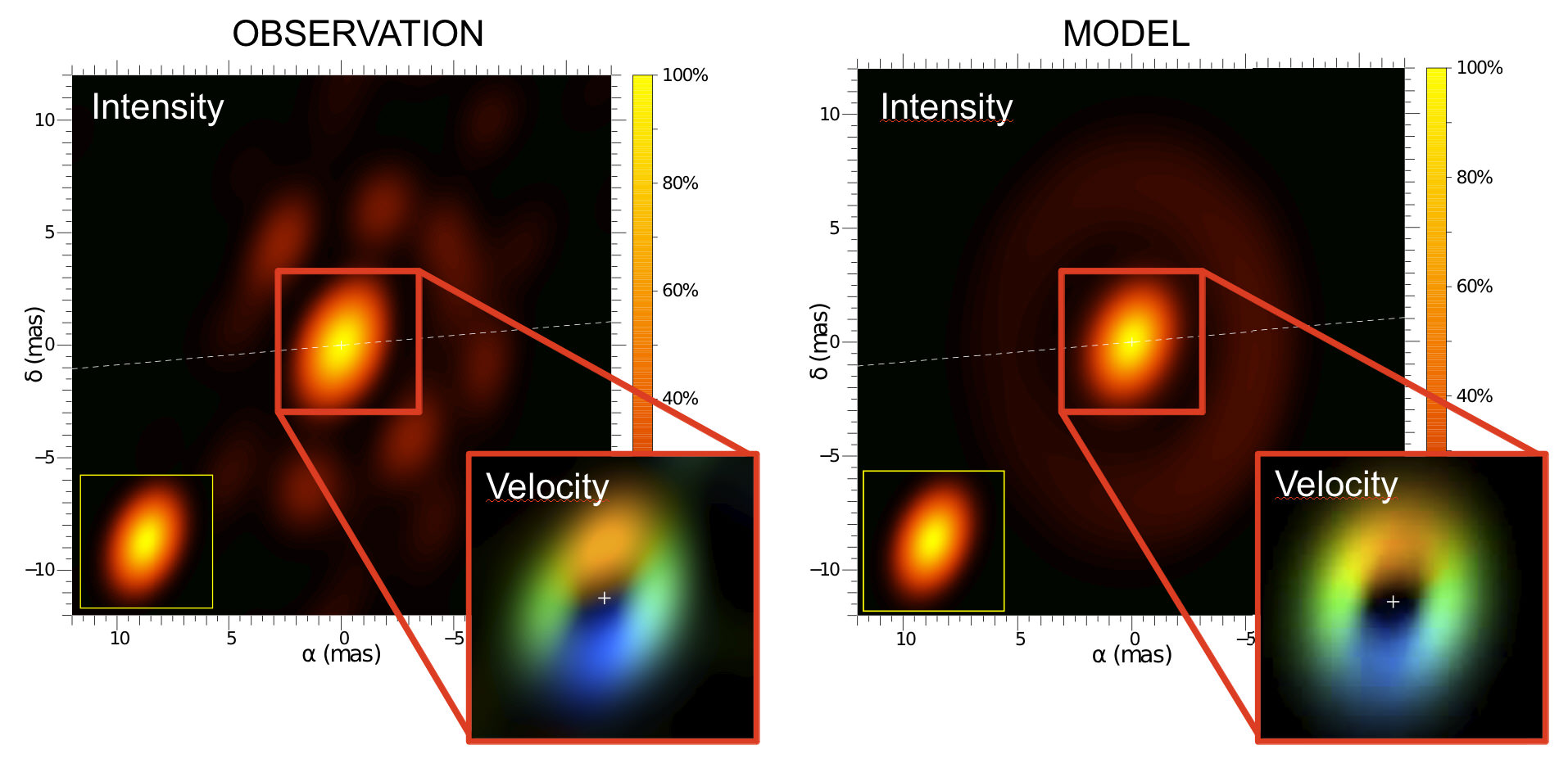[/caption]
For several years, astronomers have been trying to get a good look at a peculiar supergiant star that is surrounded by a disk of gas and dust. The star, HD 62623, is one of the very few known supergiant stars to have such a disk. These disks are generally only associated with smaller, young stars, as supergiants have strong stellar winds that would blow away any surrounding plasma and debris. Now, using long-baseline stellar interferometry with the “Amber” instrument at ESO’s Very Large Telescope interferometer, a team of astronomers were able to capture, for the first time, a 3-D view of this strange star and its surrounding environment, which revealed a hidden secret: a companion star is likely responsible for the surrounding disk.
“Thanks to our interferometric observations with Amber we could synthetize a 3-D image of HD 62623 as seen through a virtual 130 m-diameter telescope”, says Florentin Millour, leading author of the study, from Observatoire de la Côte d’Azur. “The resolution is an order of magnitude higher compared with the world’s largest optical telescopes of 8-10 m diameter.”
HD 62623 is an exotic, hot, supergiant star. Supergiants are the most massive stars out there, ranging between 10 to 70 solar masses, and can range in brightness from 30,000 to hundreds of thousands of times the output of our Sun. They have very short lifespans, living from 30 million down to just a few hundred thousand years. Supergiants seem to always detonate as Type II supernovae at the end of their lives.
“Our new 3D image locates the dust-forming region around HD 62623 very precisely, and it provides evidence for the rotation of the gas around the central star,” said co-author Anthony Meilland from Max Planck Institute for Radio Astronomy. “This rotation is found to be Keplerian, the same way the Solar system planets rotate around the Sun.”
The companion star, although not seen directly because its light couldn’t be resolved among the brightness of HD62623, was detected by a central cavity between the gas disk and HD 62623. The companion is thought to be approximately the mass of our Sun, and its presence would explain the exotic characteristics of HD 62623, which has many similar characteristics to a monster among the old stars within our Galaxy, Eta Carinae.
HD 62623 is located in the constellation Cygnus near another bright supergiant, Deneb of the summer triangle. Deneb however, like most other supergiants, has no surrounding disk.

The images obtained with the Amber instrument combines spatial and velocity information, showing not only the shape of the close environment of HD 62623, but also its kinematics or motion. Up to now, the necessary kinematics information was missing in such images.
The astronomers were able to “disentangle” the dust and gas emission in the HD 62623 circumstellar disc, and measure the dusty disc inner rim. They also constrained the inclination angle and the position angle of the major-axis of the disc.
The new 3D imaging technique used by the team is equivalent to integral-field spectroscopy, but gives access to a 15 times larger angular resolution or capacity to detect fine details in the images. “With these new capacities, the VLTI will be able to provide a better comprehension of many sky targets, too small to be resolved by the largest telescopes,” said Millour. “We could aim at young stellar disks or jets, or even the central regions of active galaxies.”

